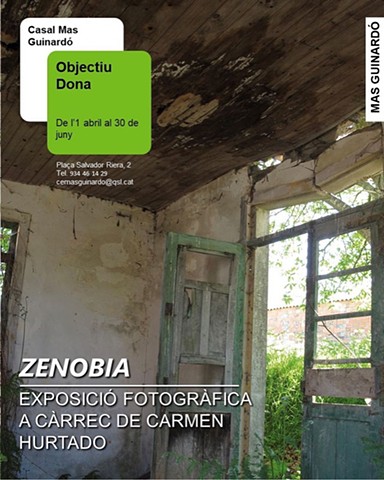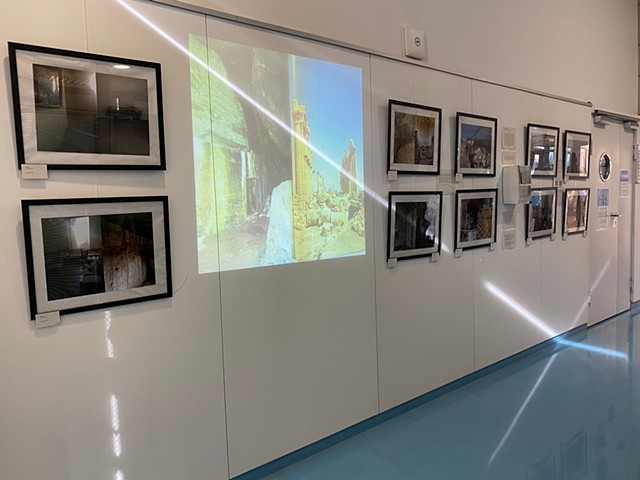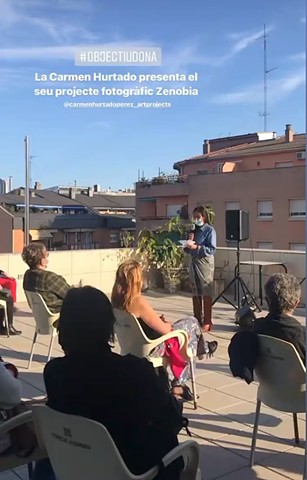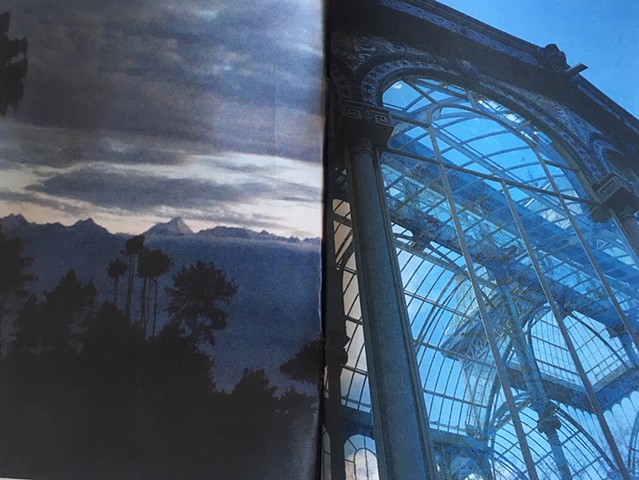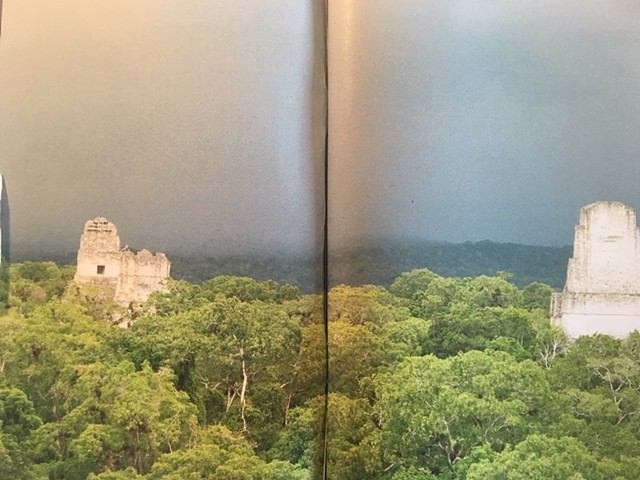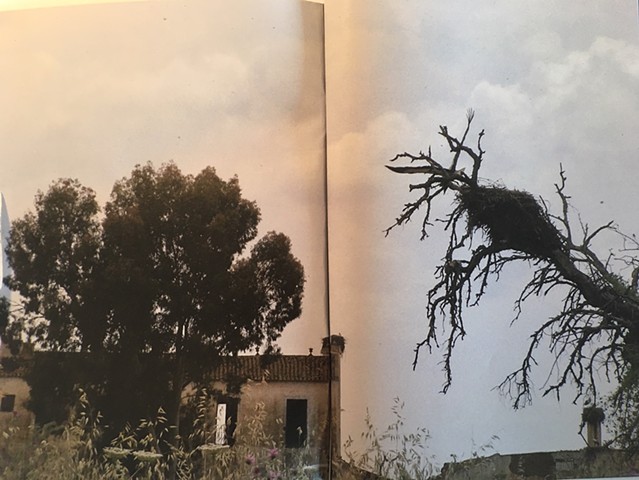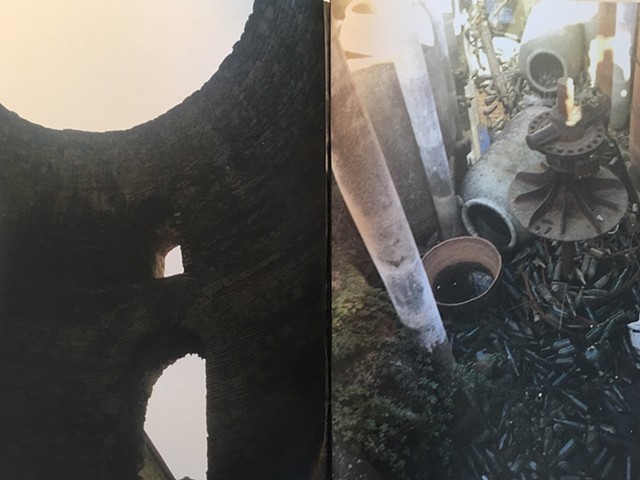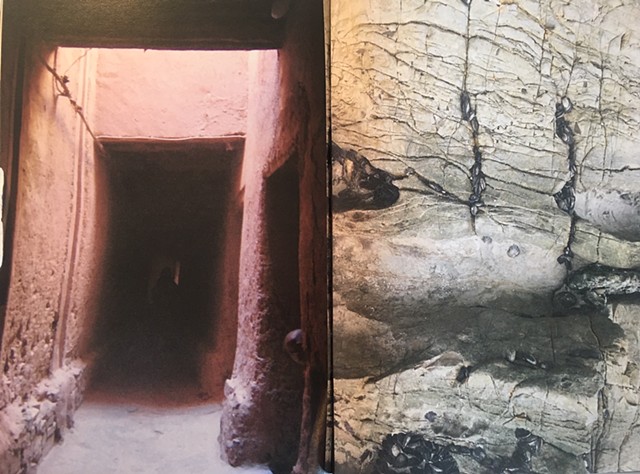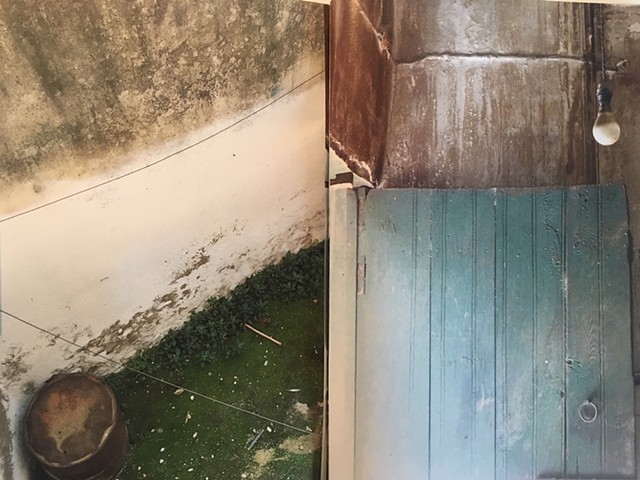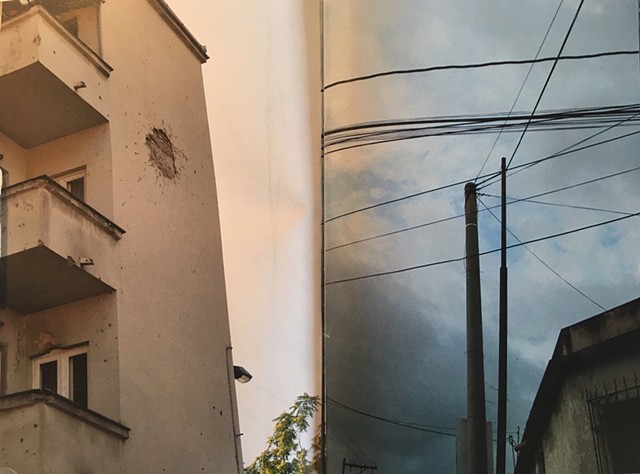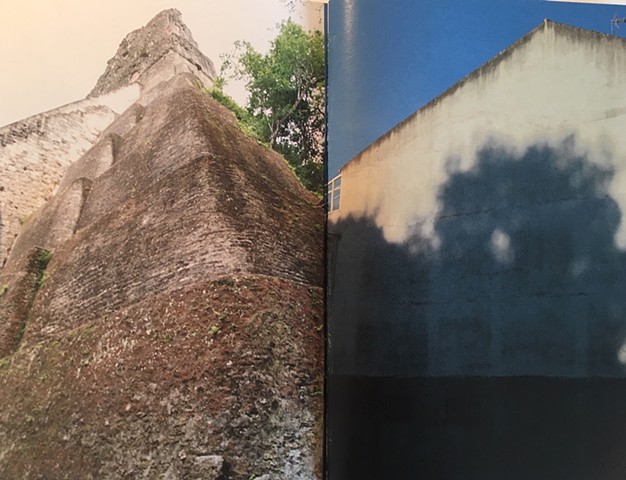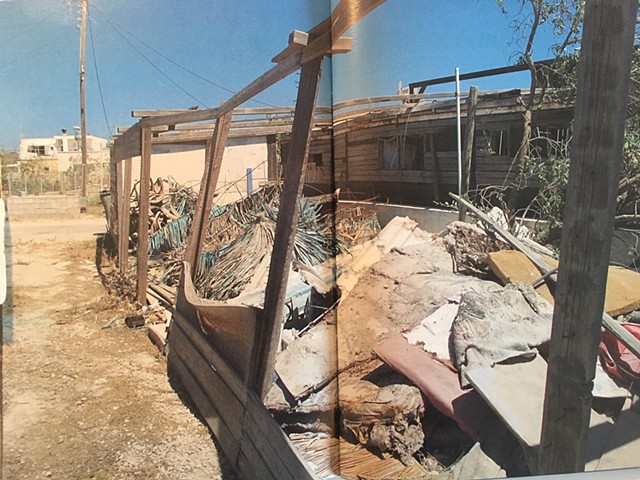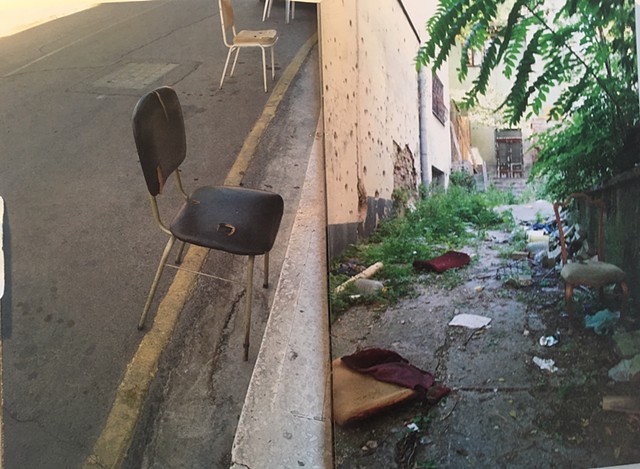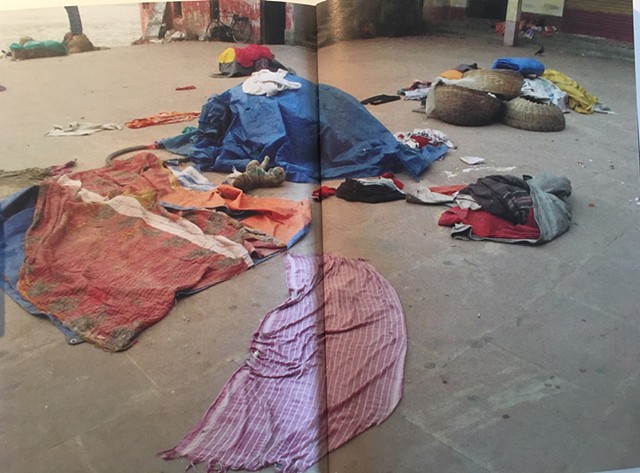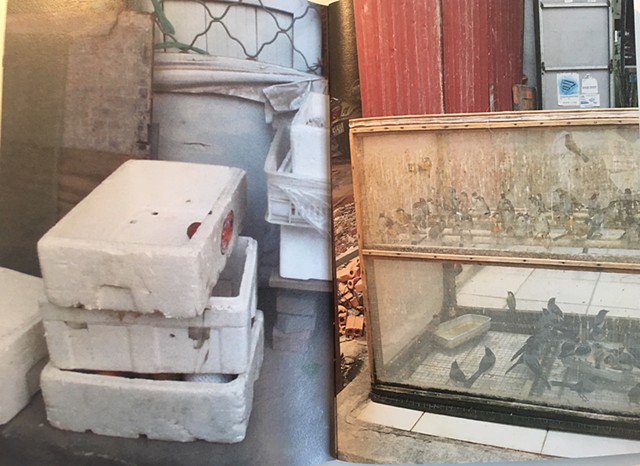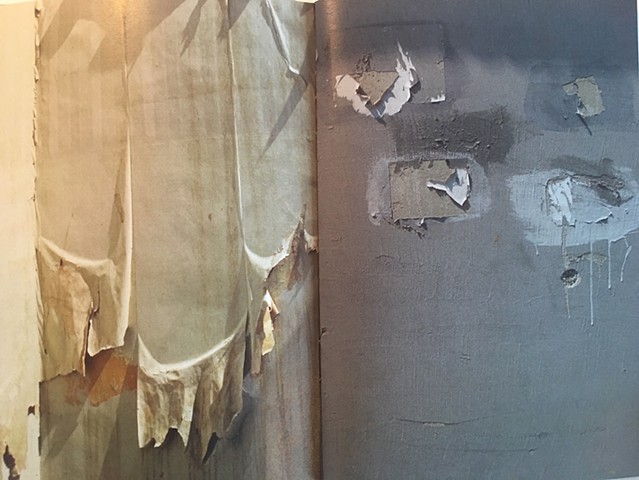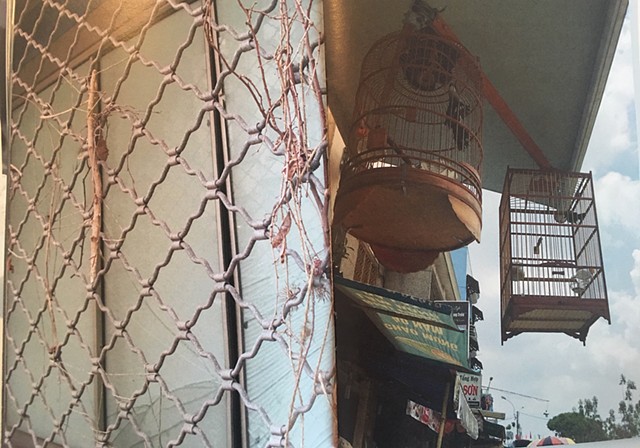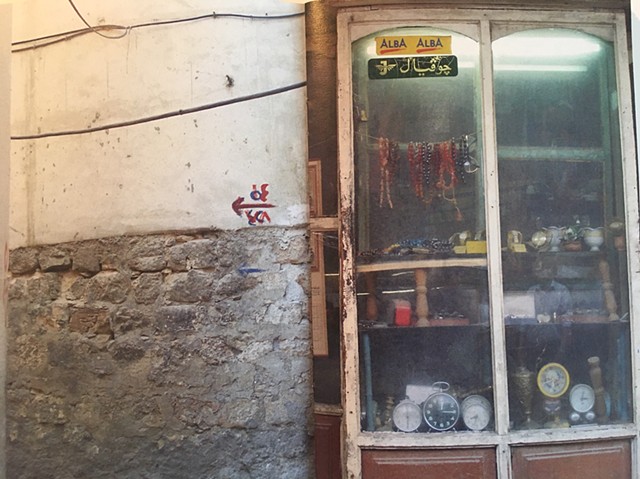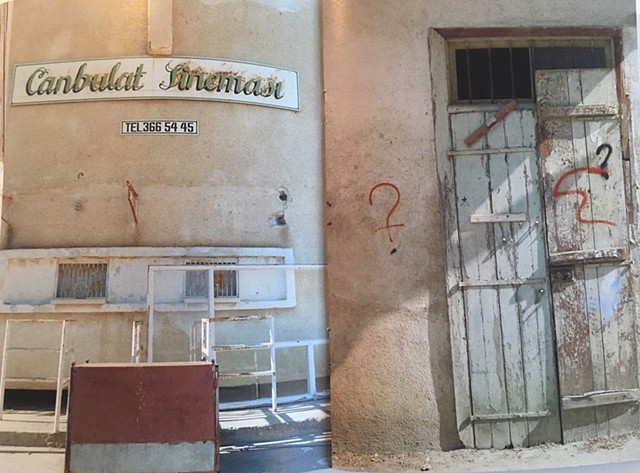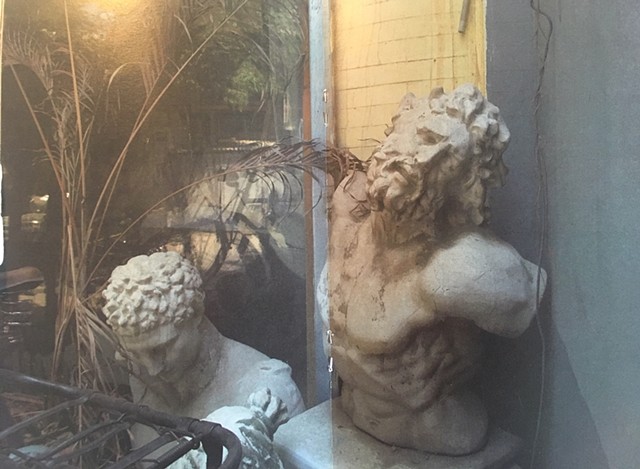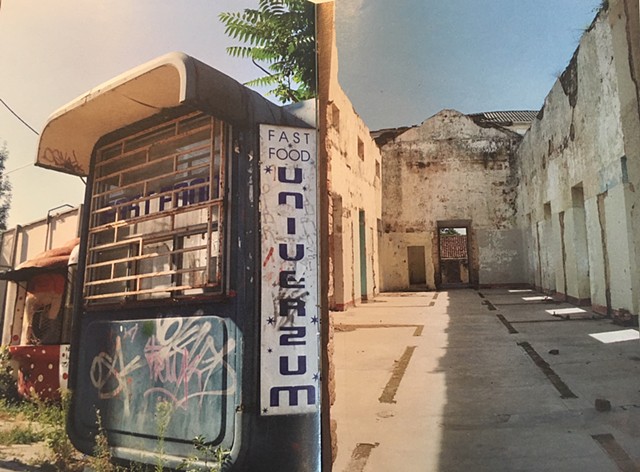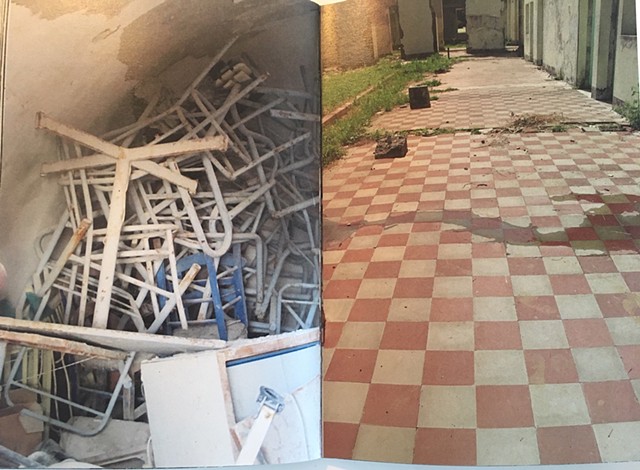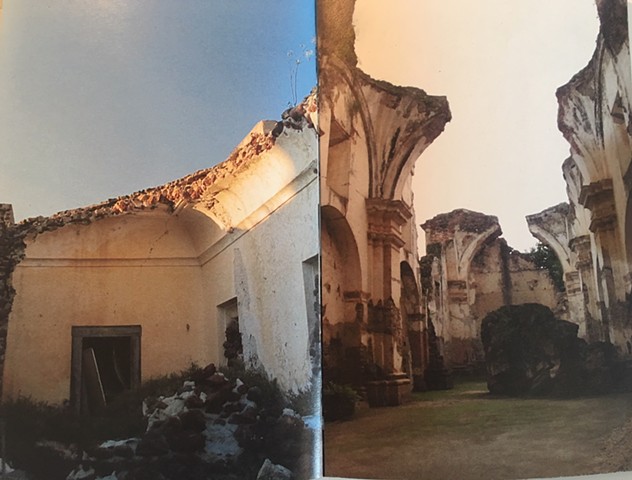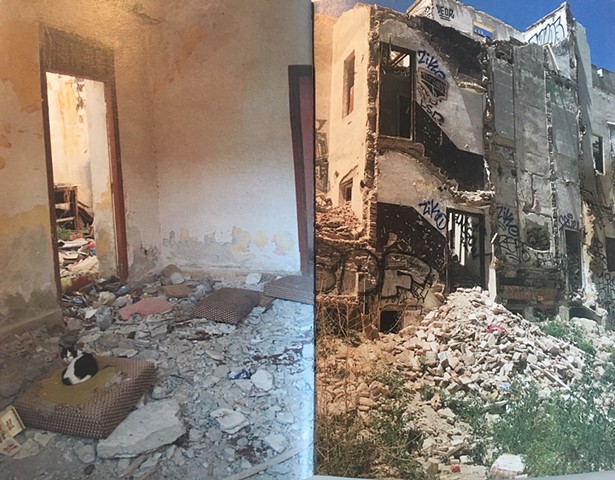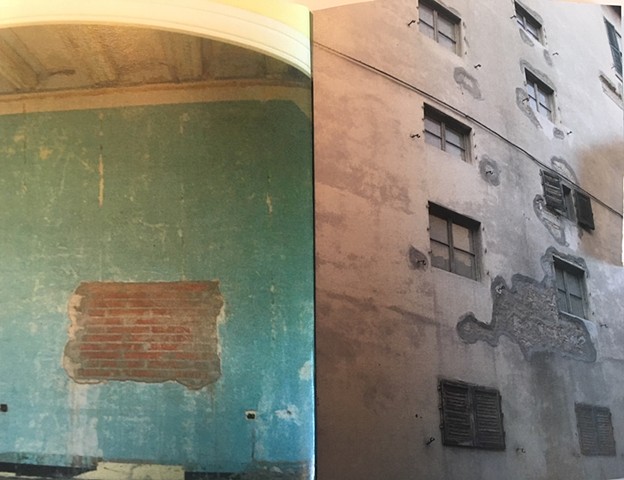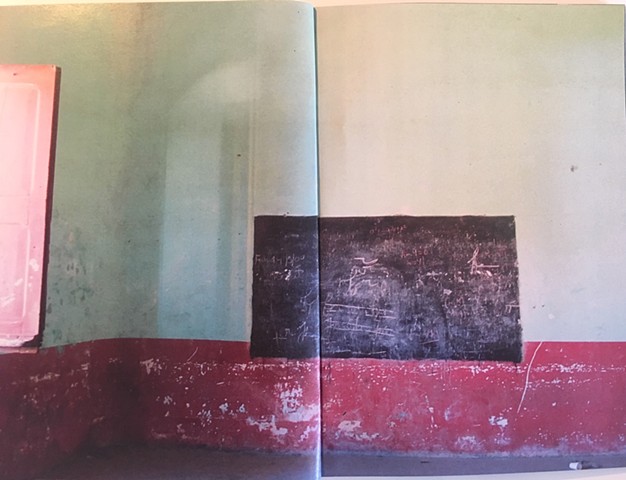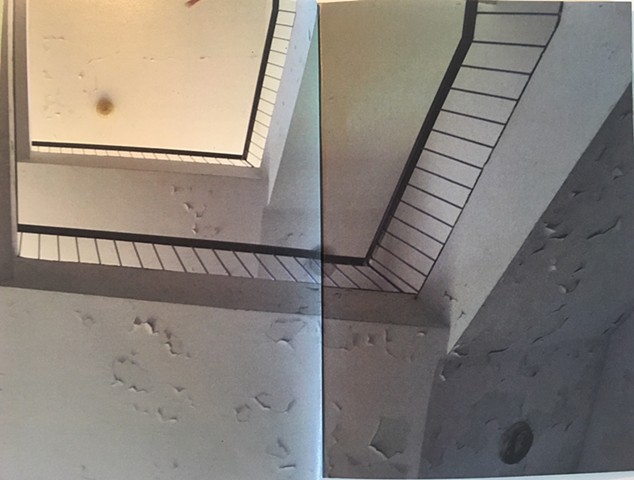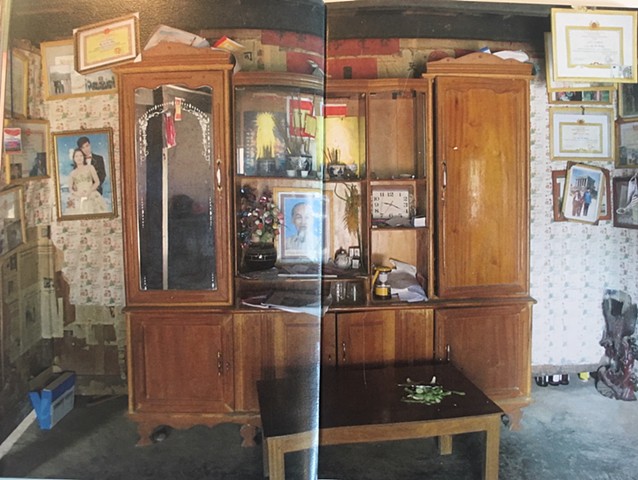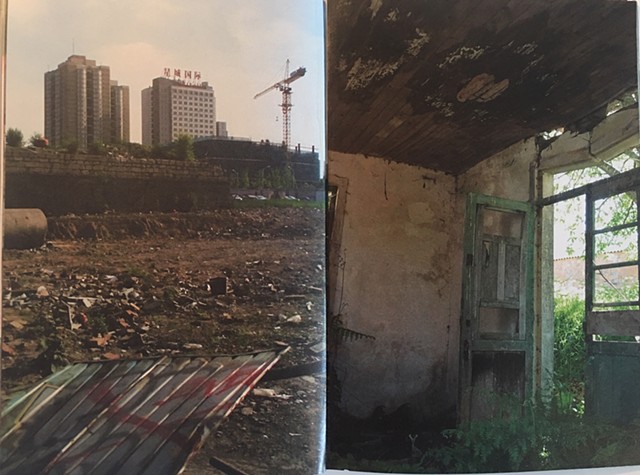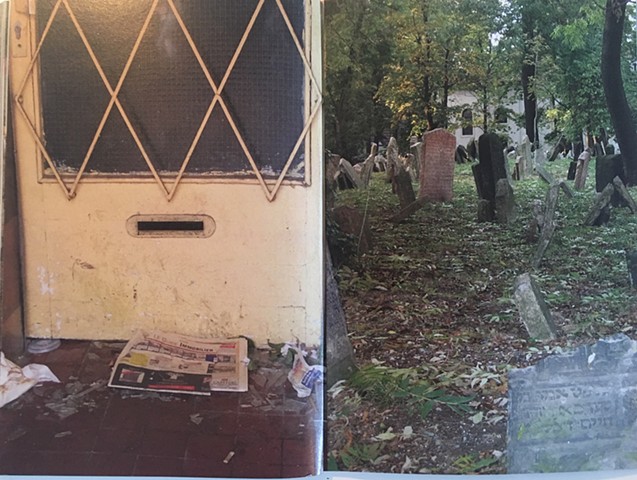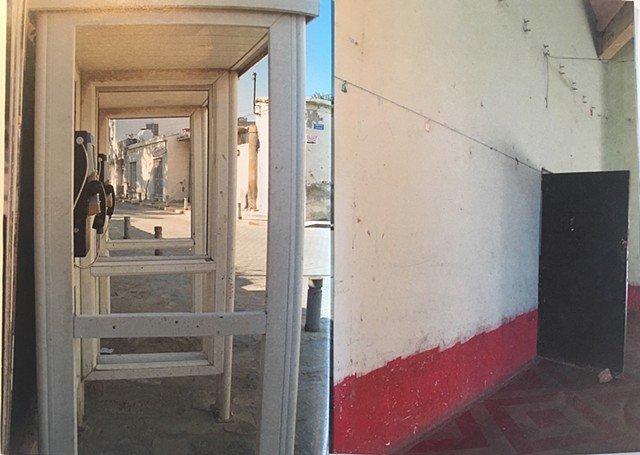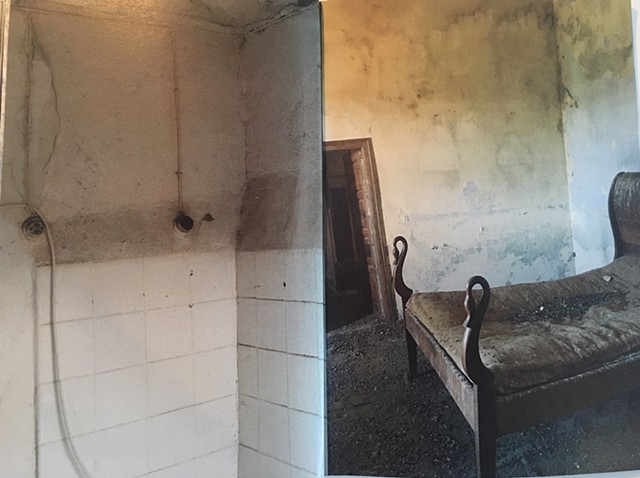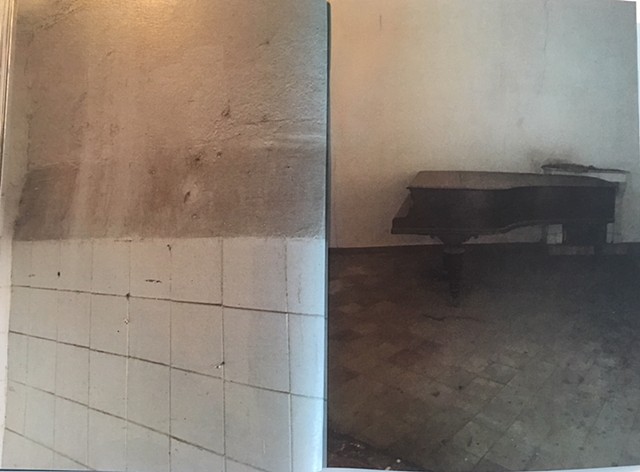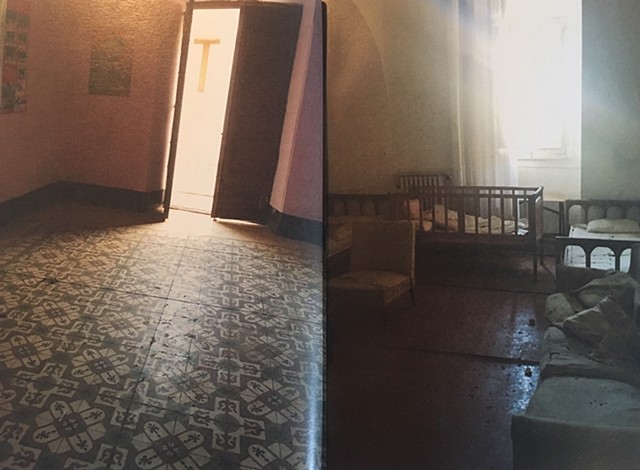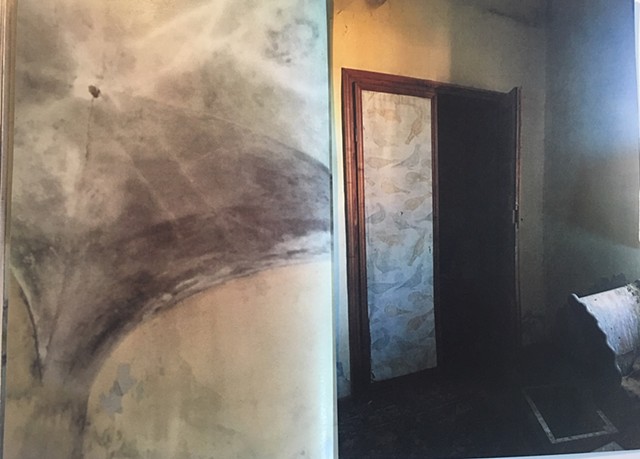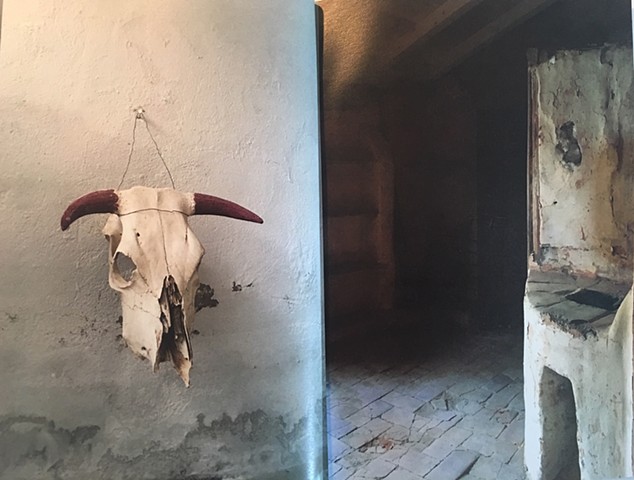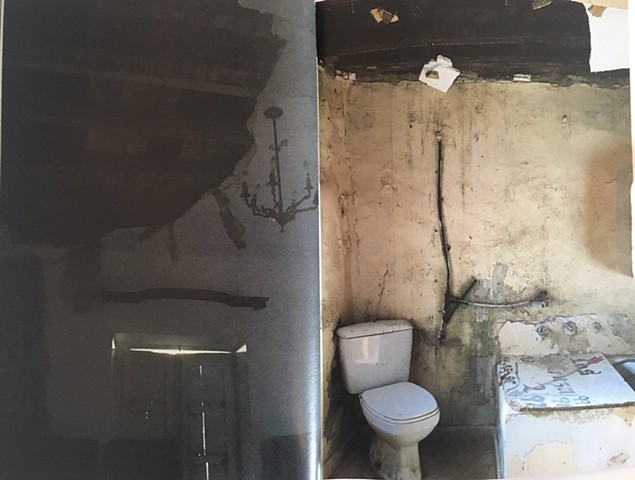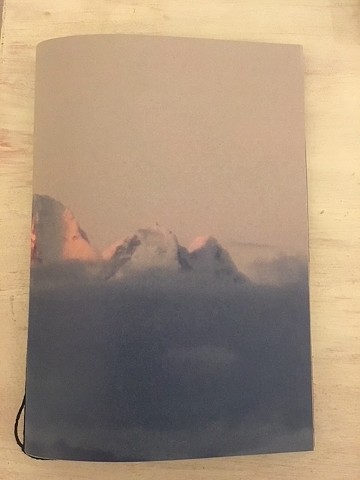ZENOBIA
ZENOBIA
Inspired by the imaginary city of Zenobia from the work "The invisible cities" by Italo Calvino.
The project recreates a city made of pieces from other places.
Cities that i've visited, abandoned places found on journeys and drifts.
In the last part of the project I photograph several of the abandoned houses where my ancestors lived.
In my journal diary I wrotte at the end of the project:
`I have spent months working on a photographic project of places in ruins that I have visited or inhabited and that are part of my history.
I rebuild that longed-for city of oblivion.
I place the pieces scrupulously in order, and recover the remains of the houses of my ancestors, the ruins that have left me and that is me, Zenobia`
Carmen Hurtado 01.13.17
THESE RUINS THAT WE ARE.
ABOUT ZENOBIA
Text by Jesus Aguado
This is a fragment of the text:
"In Zenobia there are halls, living rooms, bedrooms, streets, shops, palaces, passageways, wire fences, windows, cranes, crosses, a cat, birds, poles, balconies, patios, photographs, mailboxes, diplomas, lamps. Things with soul about to disappear not because of themselves, the things that are, but because the soul has lost its aura, its prestige, its ability to make its voice heard They are there, splintered and impoverished, because our world splinters it and impoverishes everything .
That is their sad philosophy, that is their impassable model of civilization. C. Hurtado, who intuits it, is rescuing from those ruins, some of her own and others of others, not what they were, her outdated splendor, but what she and each one of us are.
Because we are, in fact, ruins, because we inhabit ruins, but that is what, once we accept it and move into it (transferring our sensitivity, our imagination, our ability to understand, our desire, our light, our body ), returns to us, now without intermediaries, meaning, time, nature, the other, heaven or what is achievable from heaven (it has already been said) and our life. Wasn't this, by the way, what art has always sought?"
Limited photo edition of 3 copies on Hanhemüle Paper.
Photographic book in edition of 300 copies. Zenobia. HU editions (within the web at HU editions)
ZENOBIA
Inspirado en la ciudad imaginaria de Zenobia de la obra “Las ciudades invisibles” de Italo Calvino.
El proyecto recrea una ciudad hecha de pedazos de otros lugares.
Ciudades que he visitado, lugares abandonados encontrados en viajes y derivas.
En la ultima parte del proyecto fotografío varias de las casas abandonas que vivieron mis antepasados.
En mi diario escribo al terminar el proyecto:
`Llevo meses trabajando en un proyecto fotográfico de lugares en ruinas que he visitado o habitado y que forman parte de mi historia.
Reconstruyo esa ciudad anhelada de la desmemoria.
Coloco los pedazos escrupulosamente en orden, y recupero los restos de las casas de mis antepasados, las ruinas que me han dejado y que soy yo, Zenobia`
Carmen Hurtado 13.01.17
ESTAS RUINAS QUE SOMOS.
A PROPÓSITO DE ZENOBIA
Texto de Jesús Aguado
Este es un fragmento del texto:
"En Zenobia hay salones, cuartos de estar, dormitorios, calles, tiendas, palacios, pasadizos, alambradas, ventanas, grúas, cruces, un gato, pájaros, postes, balcones, patios, fotografías, buzones, diplomas, lámparas. Cosas con alma a punto de desaparecer no por ellas mismas, las cosas que son, sino porque el alma ha perdido su aura, su prestigio, su capacidad para hacer oír su voz. Están ahí, astilladas y empobrecidas, porque nuestro mundo lo astilla y lo empobrece todo.
Esa es su triste filosofía, ese es su intransitable modelo de civilización. C. Hurtado, que lo intuye, va rescatando de esas ruinas, unas propias y otras ajenas, no lo que fueron, su esplendor periclitado, sino lo que somos ella y cada uno de nosotros.
Porque somos, en efecto, ruinas, porque habitamos ruinas, pero eso es lo que, una vez que lo aceptamos y que nos mudamos a ellas (trasladando nuestra sensibilidad, nuestra imaginación, nuestra capacidad de comprensión, nuestras ganas, nuestra luz, nuestro cuerpo), nos devuelve, ahora sin intermediarios, el sentido, el tiempo, la naturaleza, el otro, el cielo o lo alcanzable del cielo (ya se dijo) y la vida nuestra. ¿No era esto, por cierto, lo que el arte ha buscado desde siempre?"
Edición limitada de fotos de 3 ejemplares en Papel Hanhemüle.
Libro fotográfico en edición de 300 ejemplares. Zenobia. HU editions (dentro de la web en HU editions)
